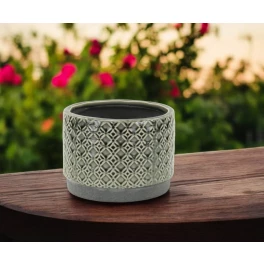There’s arguably nothing more serene than a small backyard fish pond. With an outdoor fish pond, you get the slow, deliberate, and utterly relaxing trickle of water, coupled with the peaceful meanderings of the koi or oversized goldfish. While it’s a relatively simple addition to make, an outdoor fish pond is truly one of the most effective ways to beautify your backyard and turn it into a pure “oasis.”
To add to the ambiance AND keep your pond system healthy and happy, a few well-placed plants go a long way. When choosing the correct plants for your outdoor fish pond, first consider what plants clean pond water. From there, narrow down your options based on your aesthetic preferences.
Let’s get started.
Why Choose Pond Plants?
Water plants for ponds are a natural way to keep your pond water and fish happy and healthy. Why?
- Algae: You know all that green ooze that tends to exponentially grow in wet environments like ponds, lakes, and even fish tanks? That’s algae. It’s virtually impossible to rid your pond of algae and, truth be told, you don’t need to. Algae is as good for your pond as it is bad. It’s an essential part of the pond’s food chain, but when left unchecked, it can spread and take away all those valuable pond nutrients that your fish need to thrive. Water plants provide shade to the pond, ultimately limit the sunlight hitting the algae, thus limiting its growth.
- Shade: Shade from pond plants doesn’t just keep your algae controlled, it also helps maintain a stable water temperature.
- Filter: Backyard fish ponds are susceptible to bacteria and harmful compounds. What plants do is break down these undesirable additions before they negatively impact your fish.
- Oxygen: As the plants filter all the unwanted compounds, they produce oxygen and distribute it into the pond.
Types of Pond Plants
When choosing the right types of pond plants for your outdoor fish pond, first consider your options.
- Floating: Floating plants do just that, they float on the very top of the water’s surface. The roots of floating plants actually hang down below into the water. They provide great shade for your fish and help limit all that pesky algae. Common popular floating plants include:
- Water lettuce
- Frogbit
- Duckweed
- Water hyacinth

Photo by Elena Elisseeva on Shutterstock
- Marginal: Marginal pond plants, also called “bog plants” in some circles, grow alongside the pond, directly in soil that stays wet. Not only do they help boost the oxygen in your pond, but they also serve as home to insects and various amphibians. Common marginal plants include:
- Iris
- Cattail
- Water celery
- Horsetail
- Papyrus

Photo by Ron Zmiri onShutterstock
- Deep Water: Deep water plants are placed securely at the bottom of a pond, but grow upwards to the water’s surface. Again, these plants help increase oxygen, filter the water, and serve as a great shade cover. Common deep water plants include:
- Water lily
- Water hawthorne

Photo by PICHET NINVANIT on Shutterstock
- Submerged: Submerged aquatic plants are planted underwater and remain there. They are one of the biggest sources of oxygen in a pond and provide great natural filtration. Common submerged plants include:
- Baby pondweed
- American pondweed
- Mare’s tail

Photo by Melissa King on Shutterstock
The Best Plants for Your Fish Pond
What? Out of the pond plants list, which plants should you purchase? As you first set up your outdoor fish pond, use an equal assortment of all four types of pond plants outlined above. If you have a small pond, start with one or two in each category. Otherwise, purchase enough plants (in equal proportions) to eventually cover between 30-50% of your pond’s surface.
As your pond matures, keep your eyes peeled for signs you may need to add more plants. For example, if you notice an increase in algae, increase the number of deep water or floating plants.
When? Spring is the best time to start planting around your fish pond.
Where? Plants for fish ponds are available online, at nurseries, and at home improvement stories in both seed and “start” form. As you shop around, you’ll notice there’s a huge assortment of pond plants available in multiple colors.
How? Planting pond plants is tricky because you must secure all the plants (except floating varieties) to the soil. The best course of action is to pot your pond plants with a special aquatic plating planting basket with holes (this helps it submerge). Fill the basket with aquatic soil--a mixture of peat and sand, and the pond plant. Then, apply a hefty layer of small gravel on top of the soil and place into the pond.
Pond plants are extremely beneficial to your outdoor fish pond ecosystem. With the right amount of each type of aquatic pond plants, you’ll have filtered, oxygenated water, controlled algae, plenty of shade, and thriving fish.





































